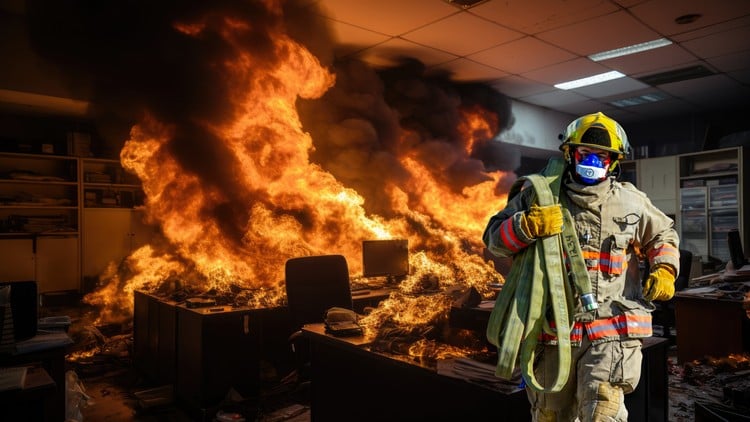
Be a Fire Warden in Your Workplace – Mandatory Fire Safety Drill for Educators, Caregivers and Construction Supervisors
⏱️ Length: 2.3 total hours
👥 14 students
Add-On Information:
Note➛ Make sure your 𝐔𝐝𝐞𝐦𝐲 cart has only this course you're going to enroll it now, Remove all other courses from the 𝐔𝐝𝐞𝐦𝐲 cart before Enrolling!
- Course Overview
- This intensive 2.3-hour program empowers individuals in construction, education, and care to act as certified Fire Wardens.
- It moves beyond basic compliance, cultivating a proactive safety culture within diverse, high-risk environments.
- Participants gain critical insights into foundational fire science and its practical implications in dynamic workplace settings.
- The curriculum emphasizes sector-specific challenges, ensuring relevance for schools, care homes, or active construction sites.
- Through essential theory and practical scenarios, attendees become confident first responders, mitigating risks and preserving life and property.
- Focuses on emergency preparedness, effective crisis communication, and coordinated incident management.
- Equips you with fundamental knowledge to uphold rigorous safety standards and fulfill vital organizational responsibilities.
- Requirements / Prerequisites
- No prior formal fire safety training is strictly required; this course suits all individuals aspiring to Fire Warden certification across specified sectors.
- Participants are expected to actively engage in practical exercises and scenario-based learning, including safe handling of emergency equipment.
- A fundamental interest in workplace safety and commitment to leadership during emergencies are highly encouraged.
- Skills Covered / Tools Used
- Skills Covered:
- Developing and deploying sector-specific emergency response plans for construction, education, and care environments.
- Implementing systematic inspection and maintenance routines for all fire safety equipment and evacuation routes.
- Establishing effective communication protocols for internal teams and external emergency responders.
- Conducting post-incident analyses to drive continuous improvement in fire safety strategies.
- Applying dynamic risk assessment to identify and mitigate evolving workplace fire hazards.
- Fostering a proactive fire prevention culture among all personnel.
- Tools Used:
- Hands-on simulations with various fire extinguisher types (water, foam, CO2, dry powder) to understand functional nuances and appropriate use.
- Interactive engagement with building schematics and digital emergency planning software.
- Utilizing fire safety audit templates and regulatory compliance checklists.
- Scenario-based drills, including simulated alarms and controlled evacuation sequences.
- Familiarization with fire alarm activation points and emergency broadcast systems.
- Skills Covered:
- Benefits / Outcomes
- Attain official Fire Warden certification, fulfilling mandatory regulatory requirements for your role.
- Elevate workplace safety standards, fostering proactive fire prevention and robust emergency readiness.
- Develop critical leadership skills to manage high-pressure situations, protecting vulnerable populations and colleagues.
- Minimize organizational liability and ensure comprehensive compliance with fire safety legislation.
- Contribute to a resilient safety culture, enhancing collective preparedness and collaborative incident response.
- Gain transferable, life-saving knowledge applicable professionally and personally, reinforcing community safety.
- Advance your professional standing by demonstrating expert competence in emergency management.
- PROS
- Sector-Specific Relevance: Content customized to the distinct fire safety challenges in construction, education, and care sectors.
- Efficient Learning: Focused 2.3-hour training minimizes time commitment, ideal for busy professionals.
- Practical Application: Hands-on drills and realistic scenarios ensure immediate, effective skill application.
- Personalized Instruction: Small class size (14 students) guarantees individual attention for deeper understanding.
- Enhanced Employability: Certification boosts career prospects and demonstrates commitment to workplace safety.
- Expert-Led: Training by seasoned professionals provides invaluable real-world experience and best practices.
- CONS
- The compact 2.3-hour format, while efficient, may limit extensive exploration of highly complex fire science theories or broad practical equipment usage beyond core warden duties.
Learning Tracks: English,Business,Industry
Found It Free? Share It Fast!